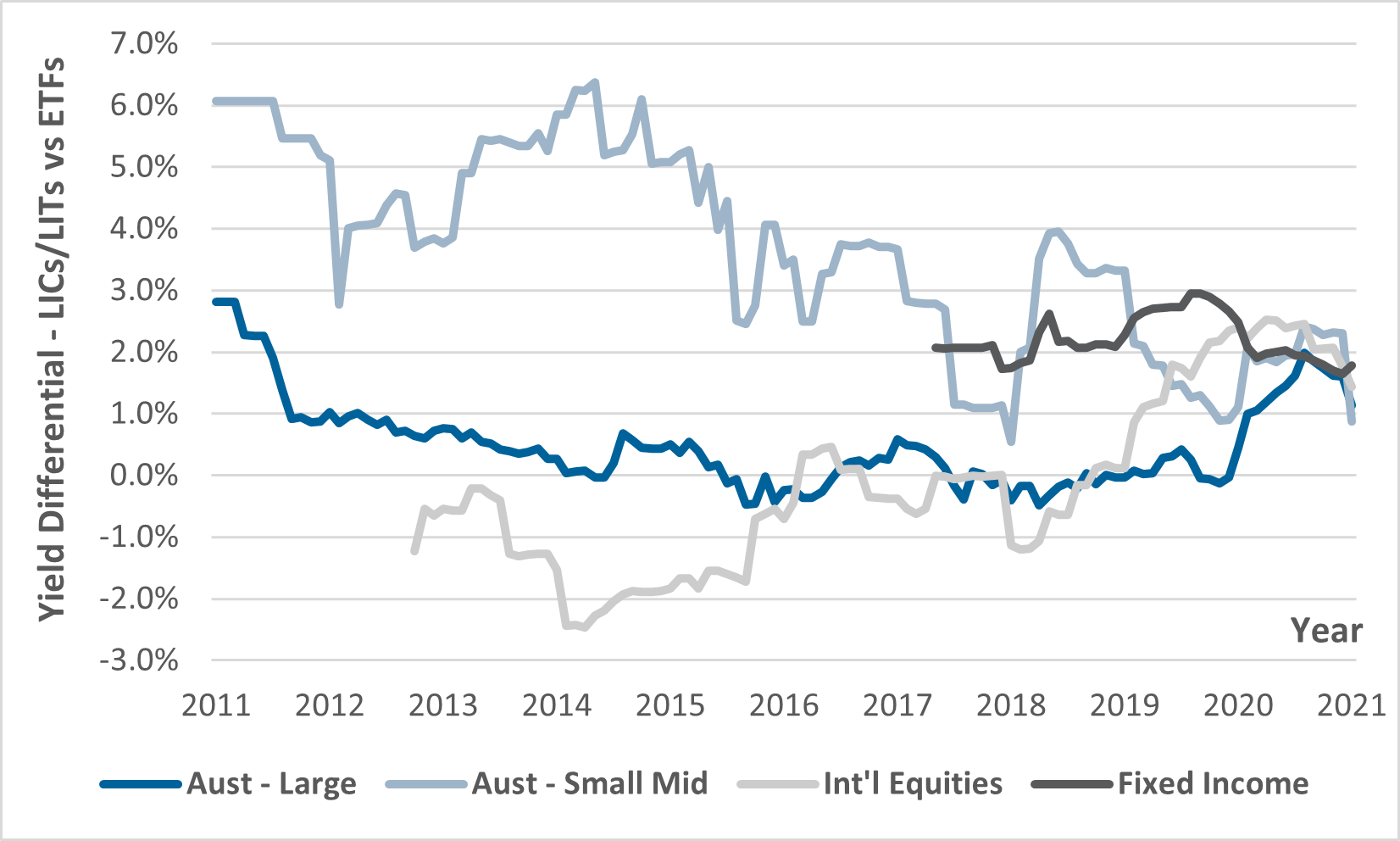LICs and LITs: Who are the yield heroes?

Risk Return Metrics
It is well known that LICs, as a company structure in contrast to a trust structure (LITs, ETFs, Unlisted Unit Trusts), have a structural advantage in their ability to manage or smooth income. They also attach a higher and more consistent level of franking to that income.
In short, as the analysis in this article illustrates on the basis of a comparative analysis, LICs:
- Pay higher and more consistent income;
- That income is less correlated to market cycles, both in up-markets but more importantly in down-markets;
- On a market cap-weighted basis and which represents the volume weighted dollar of investor experience (versus a median calculation - the average across all LICs), the average level of income in the LIC sector increases but it actually marginally declines in comparable ETF sectors;
- Due to dividend and franking reserves, past is actually precedent to a degree with LIC income (predictability of income) whereas past provides very little guide to future trust income; and,
- Not forgetting Debt LITs, all eight ASX-listed debt LITs have materially outperformed their ETF cousins on an income basis.

Taking all the above into consideration, it is little wonder that particular LICs are popular amongst investors in the retirement stage in their investment lifecycle. The importance of stability of income in down-markets should not be under-estimated.
It reduces the need to realise capital to make up any income shortfall, and realising capital in a significant down market creates significant sequencing risk, as any issuer of retirement products knows very well.
While the S&P/ASX 200 just had a bumper dividend reporting period, the question is how sustainable that is? Some analysts believe not very, believing it was driven by a confluence of events: slashed Capex (20-year low); record iron ore prices (since materially retraced), and; 3) catch-up from slashed FY20 dividends. Whatever the case may be, the key point: uncertainty in future dividends. Which gets us back to the stability of LIC income.
But what about the discount to NTA risk? Well, again on a market cap weighted basis (exactly how all major global market indices are calculated) and representing the volume weighted of investor dollar experience, the key LIC sector have generally and continue to trade at a premium to NTA (see analysis on page 3). It appears an investor can have both the income and capital cake.
Which LICs and LITs have the most consistent yields?
On page 4 of the attached report readers will find an historic assessment of risk and return of income in four LIC/LIT categories:
- Australian Equities - Large Cap
- Australian Equities - Small Mid Cap
- Debt LIT
- International Equities
The objective of this analysis is to provide a guide as to where RRM approximates yield levels maybe over the short to medium term. By evaluating ‘risk’ we refer to the historic variability to the downside of absolute dividend amounts. I.e., has, by what degree, and how frequently have there been dividend declines (a downside deviation measure).
Standout dividend payers in Australian Equities - Large Cap sector with regard to consistency include WAM Leaders (ASX:WLE), Plato Income Maximiser (ASX:PL8) and Whitefield Limited (ASX:WHF).
In the Australian Equities - Small Mid Cap sector with regards to consistency no LICs
approach the three Wilson Asset Management LICs (ASX:WAM, ASX:WAX,
and ASX:WMI) in terms of elevated yield and consistent and material
growth over time. Acorn Capital Investment (ASX:ACQ) is another standout, having
generated some of the highest growth rates in absolute amounts
in the sub-sector. While NAOS Emerging Opportunities Company (ASX:NCC) and Westoz Investment Company (ASX:WIC) have had remarkably stable
income levels over the years, those absolute amounts have not
grown materially.
In the debt LIT sector, RRM has a high regard for all seven
managers and all eight products. And no strategy has missed a
beat with respect to income levels. It is partly a case of picking
the appropriated risk-return profile and debt sub-asset class as all
strategies differ to each other.
With respect to the International Equities sector, again we
would simply point to the rankings chart above. While yields
may not be as high as Australian equities sectors, the structural
advantage of a LIC are just as evident when you bear in mind
that broadly speaking international equities mandates typically
do not generate income too much over the 2 - 2.5% level (with
zero franking). In contrast, you are seeing almost half the LICs
(actually, more than half if you strip out the three LITs in the
sector) deliver 4%+ yields.
Download the full report
To access the full report providing a comparative analysis of income of LIC / LIT income please download the attached PDF.
Important Disclaimer: Please note the information is presented as a comparative analysis and is not intended to be nor is it a recommendation to purchase the financial products mentioned in the analysis.
9 stocks mentioned

Investment analyst with particular experience in listed and unlisted investment strategies, equities and structured products.
Expertise

Investment analyst with particular experience in listed and unlisted investment strategies, equities and structured products.
